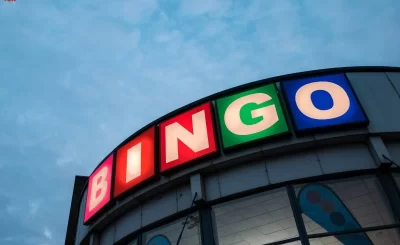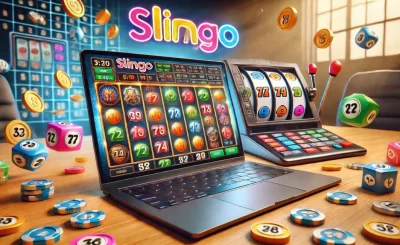Think of bingo, and a specific image probably pops into your head. A bustling community hall. The scent of weak coffee and perfume. The satisfying weight of a physical dauber in your hand. And that electric silence, broken only by the caller’s voice, just before someone shouts… “BINGO!”
Well, that world hasn’t disappeared. But it’s now just one part of a much, much bigger picture. The game we all know has undergone a quiet revolution, leaping from paper slips and plastic chips into the vast, interconnected world of online gaming. Let’s trace the fascinating journey of bingo from its traditional roots to its dynamic digital future.
The Golden Age: Bingo Halls as Community Hubs
For decades, bingo was an event. It was a night out. The local bingo hall was less a gambling venue and more a social institution—a place for camaraderie, a bit of friendly competition, and a shared experience. The game was tactile. You’d carefully arrange your lucky troll doll, smooth out your paper cards, and listen intently. The ritual was as important as the potential win.
The Mechanics of the Hall
Everything had its place. The caller, often a local celebrity of sorts, would spin the cage and call the numbers with a unique flair. Players would frantically dab their cards, the sound creating a soft, rustling chorus. And the atmosphere? Unbeatable. It was a mix of intense concentration and lighthearted chatter during the breaks. This was the heart of traditional bingo culture—a real, physical community built around a simple game.
The Digital Dawn: Bingo Finds a New Home Online
Then came the internet. And like just about everything else, bingo was ripe for a digital makeover. The early 2000s saw the first wave of online bingo sites. They were basic, sure. The graphics were simple, and the chat rooms were clunky. But they offered something revolutionary: convenience.
Suddenly, you didn’t need to drive anywhere or stick to a strict schedule. You could play a few cards in your pajamas at 2 a.m. if you wanted to. This was the initial hook. The convenience factor alone was enough to start a seismic shift in how people engaged with the game.
How Technology Transformed the Game
This wasn’t just a simple copy-paste job. Moving to digital platforms allowed for innovations that were impossible in a hall. Technology didn’t just replicate bingo; it reimagined it.
Key Innovations in Online Bingo
| Innovation | Impact |
| Auto-Daub | Software automatically marks off called numbers. Players can’t miss a number, reducing stress and allowing them to play more cards. |
| Variety of Games | From 75-ball and 90-ball to 30-ball speed bingo—players have endless choices at their fingertips. |
| Chat Rooms & Mods | Recreated the social hall banter digitally. Moderators host games and foster a sense of community among players. |
| Mobile Optimization | Dedicated apps mean the bingo hall is now in your pocket, playable anywhere, anytime. |
These features addressed the pain points of traditional play. No more messy daubers, no fear of missing a call, and no limit to the themes and game types. The evolution of bingo gameplay was all about enhancing the experience while keeping the core thrill intact.
The Social Fabric: It’s Still About People
Here’s the biggest misconception about online bingo: that it’s isolating. Honestly, the opposite is true. While you’re not sitting next to someone, the digital space has forged incredibly strong communities. Chat rooms are the new bingo hall tables. Players build friendships, share stories, and support each other—all facilitated by moderators who keep the conversation lively and welcoming.
This retention of the social element is, you know, the secret sauce. It’s what separates bingo’s digital evolution from other online casino games. It’s not a solitary activity; it’s a virtual gathering. A place to connect.
Modern Trends: Where Digital Bingo is Headed
The transformation isn’t over. The world of digital bingo platforms is constantly adapting. We’re seeing the rise of hybrid games that blend bingo with slots or poker mechanics. There’s a huge push toward immersive experiences with better graphics and themed rooms that tell a story.
And then there’s the big one: mobile-first design. Pretty much everyone plays on their phone now. So developers are creating slick, intuitive apps that are a far cry from those early websites. The focus is on smooth gameplay, integrated chats, and, of course, big jackpots that can be won with just a tap.
A Side-By-Side Look: Then vs. Now
- Then: A single, physical location.
Now: Global access from any device. - Then: Limited to one or two game types.
Now: Dozens of variations and themes. - Then: Socializing with people in your town.
Now: Building friendships with players across the world. - Then: Fixed schedule, a night out.
Now: On-demand play, 24/7.
That said, the core DNA remains identical. The anticipation. The excitement of a near-miss. The sheer joy of a win. That hasn’t changed one bit.
The Future is a Blend
So, what’s next? It’s unlikely that digital bingo will completely erase its traditional predecessor. In fact, the future probably lies in a fusion of both. Imagine bingo halls using augmented reality to overlay digital jackpots on physical cards. Or online communities organizing real-world meetups. The lines will continue to blur.
The heart of bingo—that sense of belonging, that shared moment of hope—has proven to be incredibly resilient. It simply found new tools to express itself. The halls may have gotten quieter, but the game itself has never been louder.







